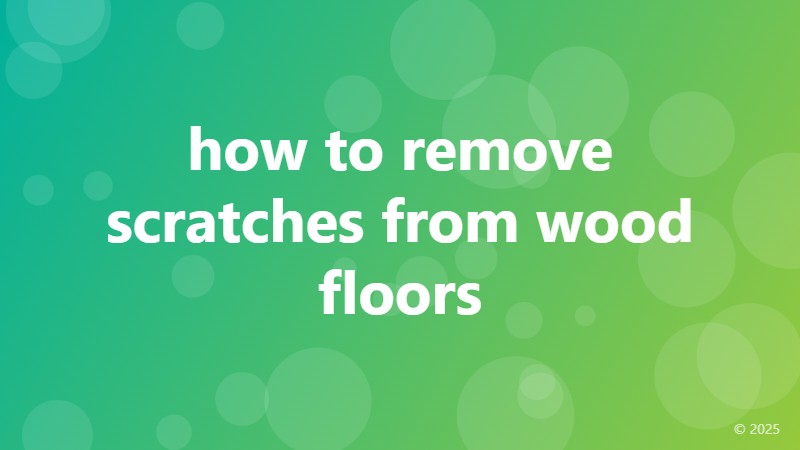how to remove scratches from wood floors
 ```html
```html
Assessing the Damage: Understanding Your Wood Floor Scratches
Before you even think about grabbing a cleaning product, take a moment to properly assess the scratches on your wood floors. Knowing the severity of the damage will dictate the best course of action. Shallow surface scratches, often appearing as light lines or scuffs, are usually the easiest to fix. Deeper gouges, however, might require more intensive methods. Examine the scratches closely; are they superficial, penetrating the finish only, or do they extend into the wood itself? This evaluation will determine which of the following methods is most appropriate for your situation.
Simple Solutions for Minor Scratches: DIY Wood Floor Scratch Repair
For minor scratches that only affect the surface finish, you might find success with simple home remedies. A paste made from baking soda and water can gently buff away light scuffs. Apply a small amount, gently rub it into the scratch with a soft cloth, and then wipe it clean. Another popular method involves using a commercial wood floor cleaner and a microfiber cloth. The cleaning solution often contains ingredients that can help to fill in minor imperfections. Remember to always test any solution on an inconspicuous area first to ensure it doesn't damage the finish further.
Intermediate Fixes: Using Wood Floor Scratch Repair Kits
If baking soda and regular cleaning aren't cutting it, consider investing in a wood floor scratch repair kit. These kits often come with colored wax sticks or markers designed to match various wood tones. These products are excellent for filling in deeper scratches that penetrate the surface finish but don't go all the way through the wood. Carefully follow the instructions included with the kit, ensuring the wax or marker is applied smoothly and evenly. Once dry, buff the area gently with a soft cloth to achieve a seamless finish.
Advanced Techniques for Severe Scratches: When to Call a Professional
For significant damage, such as deep gouges or scratches that expose the bare wood, more advanced techniques might be necessary. These often involve sanding and refinishing the affected area. This is a more time-consuming process that requires precision and expertise. Sanding improperly can easily damage the surrounding wood, making the scratch problem even worse. In these cases, calling a professional wood floor refinisher is strongly recommended. They possess the skills and tools to properly repair deep scratches without causing further harm to your valuable flooring.
Preventing Future Scratches: Proactive Floor Care
The best way to deal with wood floor scratches is to prevent them in the first place! Regular sweeping and vacuuming will remove dirt and debris that can contribute to scratching. Using felt pads under furniture legs will protect your floors from constant abrasion. Place area rugs in high-traffic areas to further minimize wear and tear. Regularly applying a protective wood floor polish or sealant can also help to shield your floors from damage and keep them looking their best. Regularly inspect your floors for damage, addressing minor scratches immediately before they become major problems.
Choosing the Right Products: Wood Floor Scratch Repair Products Review
The market offers a wide range of wood floor scratch repair products. When choosing a product, consider the depth of the scratch and the type of wood you have. Read reviews from other users to get a sense of the product's effectiveness and ease of use. Look for products that are specifically designed for your type of wood flooring, whether it's hardwood, laminate, or engineered wood. Investing in high-quality products will often yield better results and ultimately save you time and effort in the long run.
Maintaining Your Wood Floors: Long-Term Care for a Beautiful Finish
Beyond scratch repair, consistent maintenance is key to keeping your wood floors looking their best. Regular cleaning, using appropriate cleaning solutions, and protecting them from moisture are vital. Avoid using harsh chemicals or abrasive cleaners that can damage the finish. Address any spills promptly to prevent staining and warping. By following these preventative measures and employing the right repair techniques, you can keep your wood floors beautiful and scratch-free for years to come.
```